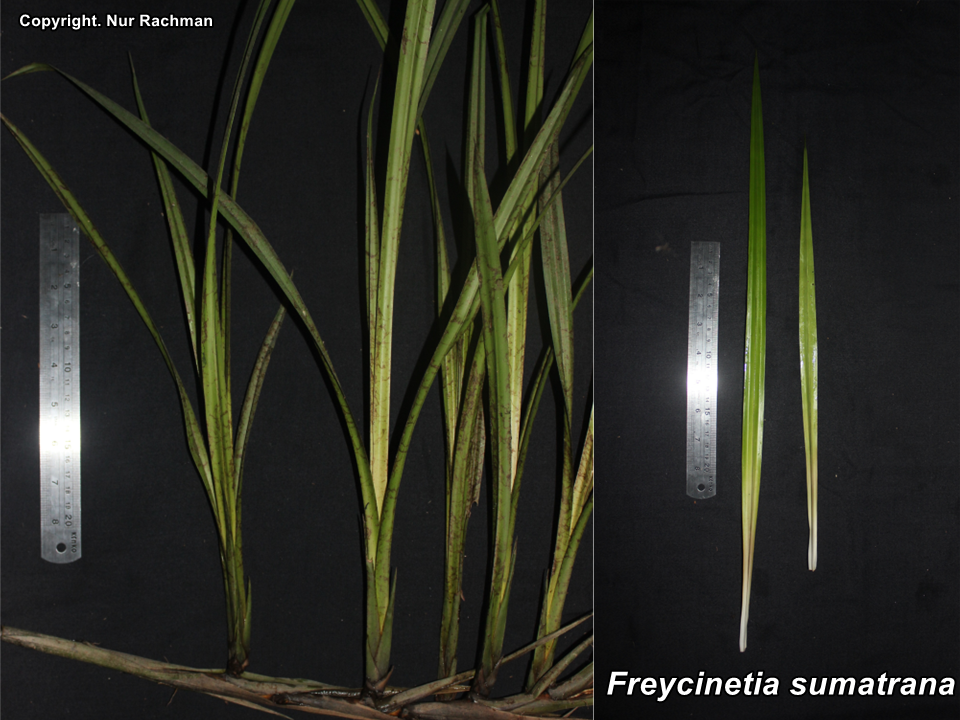Freycinetia sumatrana
Hemsl.
Pandanaceae
Nama : –
Deskripsi : Terna, terestrial atau menjalar. Rimpang memanjang, tegak atau menempel pada pohon inang. Daun tunggal, tersusun meroset, memita, menjagat, pangkal daun semi-berupih, ujung daun meruncing, bermajal, tepi mengutuh dengan duri-duri tajam pendek, pertulangan daun sejajar, tulang daun utama bagian bawah menonjol dan berduri, daun hijau tua sampai hijau terang. Perbungaan tandan-membonggol, aksiler. Bunga dan buah tidak teramati. Buah buni.
Ekologi : Persebaran alami dari Filipina, Indonesia (Sumatra, Jawa, Kalimantan, Sulawesi, Maluku), Kamboja, Malaysia, P. Andaman, P. Nicobar, Thailand, dan Vietnam. Pada umumnya tumbuh pada ekosistem dataran rendah seperti hutan primer dan hutan sekunder. Tumbuh pada habitat lahan basah dan lembab seperti daerah rawa-rawa dan rawa gambut. Tumbuh secara soliter, berumpun, tegak atau menjalar dengan akar perekat pada batang pohon inang. Referensi: Sun & De Filipps, 2010.
Kegunaan : –

